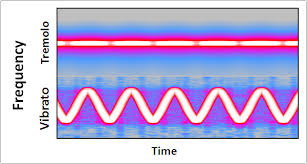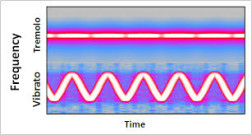Vibrato

On Vibrato
by Melissa Wimbish
Sometimes the topic of vibrato can be so scandalous! … Haha! Alright maybe that’s a stretch, but it is hard to teach and often hard to explain when you’re working with singers that have used straight tone their entire lives.
“I define vibrato as a “slight variation of pitch resulting from the free oscillation of the vocal cords”. This free oscillation of the vocal cords results from (1) an open pharynx or what many call the “open throat” along with (2) healthy “closure of the cords” (see article on vocal cord closure) I consider that vibrato is a result of these two opposites working together: open throat and closed cords. (3) Another major factor to be considered in regard to vibrato is the even sub-glottic breath pressure. This is regulated by the “support system” which involves the abdominal muscles, lower lumbar/upper gludial muscles, intercostal muscles and pectoral muscles. (See articles on breath and breath management).”
– Understanding Vibrato by David L. Jones
http://www.voiceteacher.com/vibrato.html
When explaining or teaching the technique of vibrato, what are some of your methods? Please share!
One singer who uses a great deal of vibrato, with mixed results, is Erin Neville. Some singers produce vibrato naturally, others have to be taught. Although some singers and teachers consider vibrato to be ugly and perhaps even harmful, correct vibrato is not only an attractive sound, but will not harm the voice. The best singers have full control over their vibrato and use it to accent certain words or phrases for dramatic or emotional effect. Vibrato should not be confused with a warble, which is a large fluctuation in pitch, which is usually the result of bad singing technique.
from Operargasm…http://operagasm.com/musical-term-of-the-week-146/

